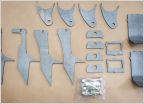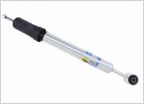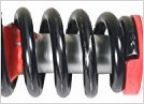-
Welcome to Tacoma World!
You are currently viewing as a guest! To get full-access, you need to register for a FREE account.
As a registered member, you’ll be able to:- Participate in all Tacoma discussion topics
- Communicate privately with other Tacoma owners from around the world
- Post your own photos in our Members Gallery
- Access all special features of the site
One of these things is just like the other?
Discussion in 'Suspension' started by trdo-r, Jun 24, 2022.


 Anyone care to chime in...
Anyone care to chime in... 2.5 lift
2.5 lift Rancho RS9000xl, SPC UCA and 285's
Rancho RS9000xl, SPC UCA and 285's Anybody running Elka 2.0 shocks/coilovers?
Anybody running Elka 2.0 shocks/coilovers? Rs999915 quicklift suspension?
Rs999915 quicklift suspension?







































































